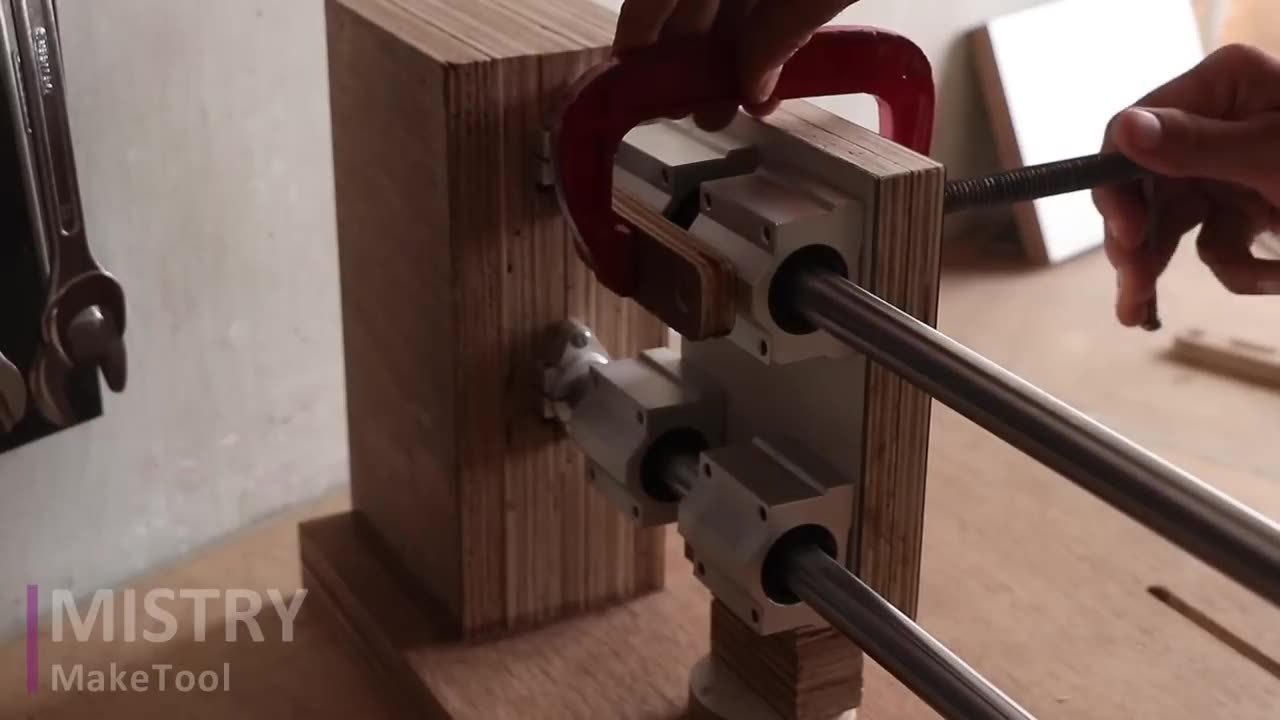Premium Only Content

Making Sliding Angle Grinder Stand _ DIY Sliding Angle Grinder Jig
reating a sliding angle grinder stand or jig can be a useful DIY project for woodworking or metalworking tasks that require precision cutting. Here's a basic guide to making one:
Materials Needed:
Angle grinder
Plywood or MDF board
Metal rails or drawer slides
Screws or bolts
L-brackets
Clamps
Safety goggles and gloves
Tools Needed:
Drill
Screwdriver or wrench
Saw (circular saw or jigsaw)
Measuring tape
Pencil
Steps:
Measure and Cut the Base: Begin by measuring and cutting a sturdy base for your sliding angle grinder stand from plywood or MDF board. The size of the base will depend on the dimensions of your angle grinder and the intended use of the jig.
Attach Rails or Drawer Slides: Attach metal rails or drawer slides to the underside of the base using screws or bolts. These will serve as the sliding mechanism for the angle grinder.
Mount the Angle Grinder: Secure the angle grinder to the base of the sliding mechanism using clamps or L-brackets. Make sure the grinder is positioned securely and can slide smoothly along the rails.
Test the Sliding Action: Slide the angle grinder back and forth along the rails to ensure smooth movement and stability. Make any necessary adjustments to the mounting or sliding mechanism as needed.
Secure the Grinder Handle: If desired, you can attach a handle or grip to the angle grinder to make it easier to maneuver while using the sliding jig.
Safety Precautions: Always wear safety goggles and gloves when operating power tools like angle grinders. Make sure the sliding jig is securely anchored to a stable work surface to prevent accidents.
Test and Fine-Tune: Once the sliding angle grinder stand is assembled, test it out on scrap materials to ensure it performs as expected. Make any final adjustments or modifications as needed to achieve the desired results.
By following these steps, you can create a DIY sliding angle grinder stand or jig that provides stability and precision for your cutting tasks. Remember to prioritize safety and take your time to ensure proper assembly and functionality.
-
 LIVE
LIVE
Meisters of Madness
2 hours agoDark Souls 3 - A Campaign Signed in Blood
126 watching -
 57:57
57:57
Candace Show Podcast
5 hours agoJamaica Finally Sent Us Kamala’s Father’s Birth Certificate | Candace Ep 109
60.7K109 -
 24:50
24:50
Misha Petrov
1 hour agoReacting to YOUR Experiences With Leftist MELTDOWNS Over Trump’s Victory
3.79K10 -
 15:33
15:33
Silver Dragons
2 hours agoBullion Dealer Reveals How to Avoid "INFLATION TAX" With Silver and Gold
2.69K1 -
 20:53
20:53
SLS - Street League Skateboarding
3 days agoGold Medals, World Class Food, Night life & more - Get Lost: Tokyo
107K9 -
 4:55:39
4:55:39
Yefune Kenizi's [PC] Gaming
4 hours ago $0.91 earnedGTAO - Heists Week: Friday w/ GamingChad
14.2K2 -
 1:23:02
1:23:02
Baked Linguini's Home Channel
3 hours agoToads Wearing Sunglasses - Let's Play Battletoads in Battlemaniacs
29.2K3 -
 4:51:47
4:51:47
Akademiks
6 hours agoDiddy Last Stance! Bail Hearing Live! Lil Durk Case update! Young Thug not getting back his SH*T?
84.8K17 -
 1:03:01
1:03:01
In The Litter Box w/ Jewels & Catturd
23 hours agoLegacy media CANNOT be trusted | In the Litter Box w/ Jewels & Catturd – Ep. 697 – 11/22/2024
60.9K32 -
 1:22:02
1:22:02
The Quartering
5 hours agoTrump BEATS NYC Felony Charges, New Woke Car Ads, WW3 Updates & More
84.7K49